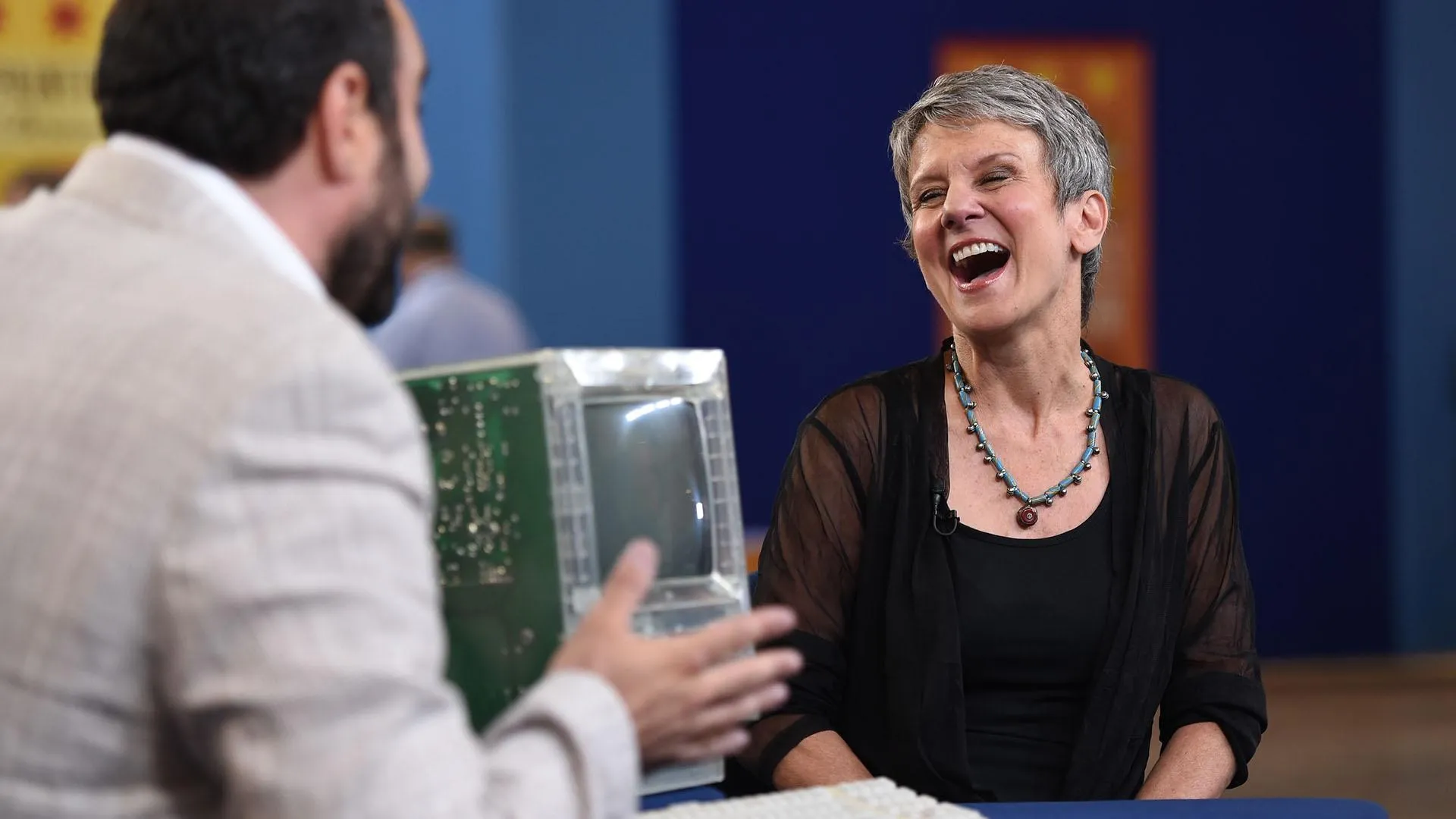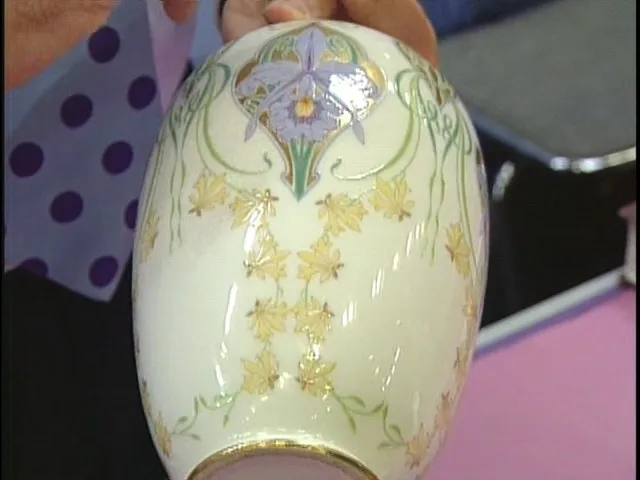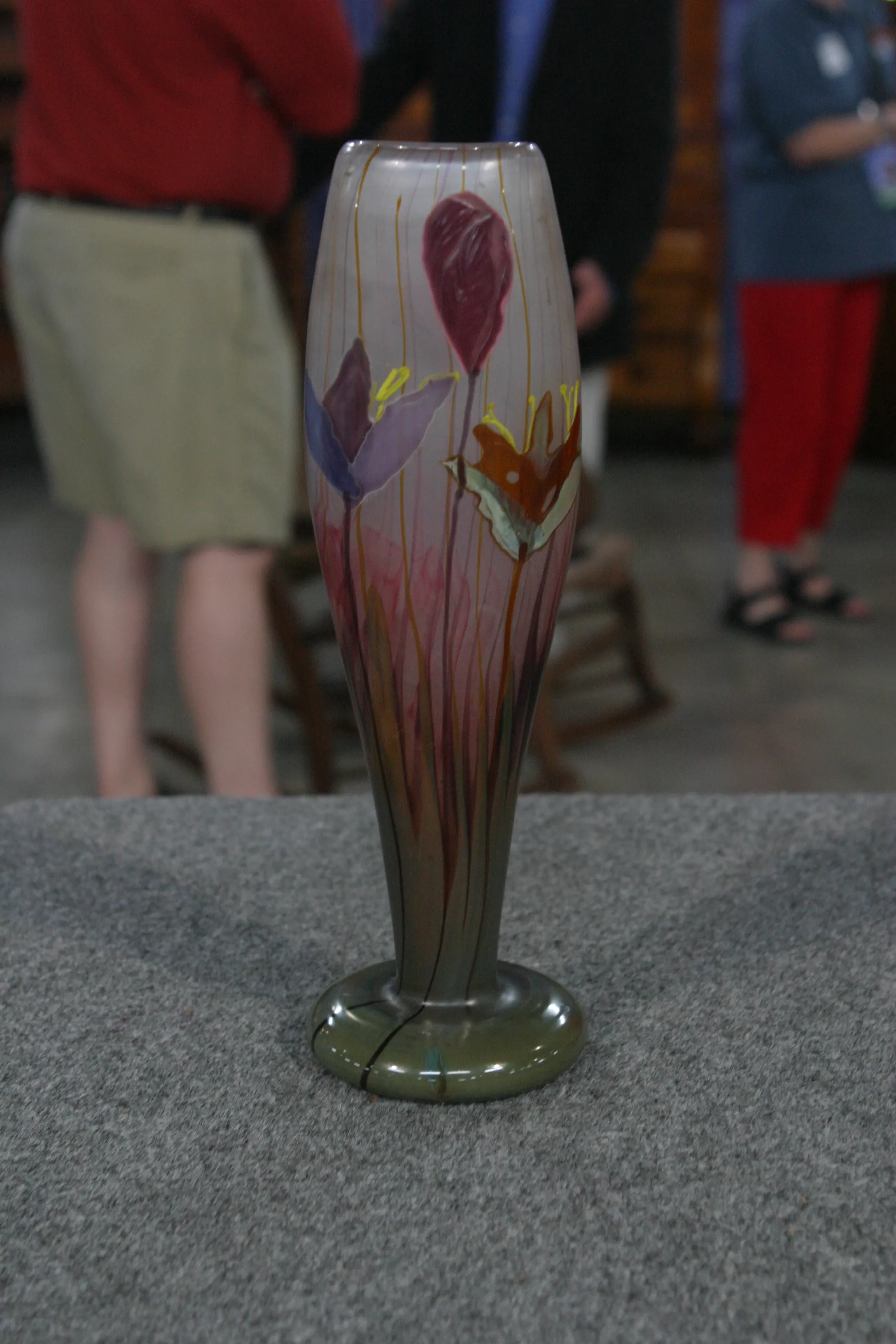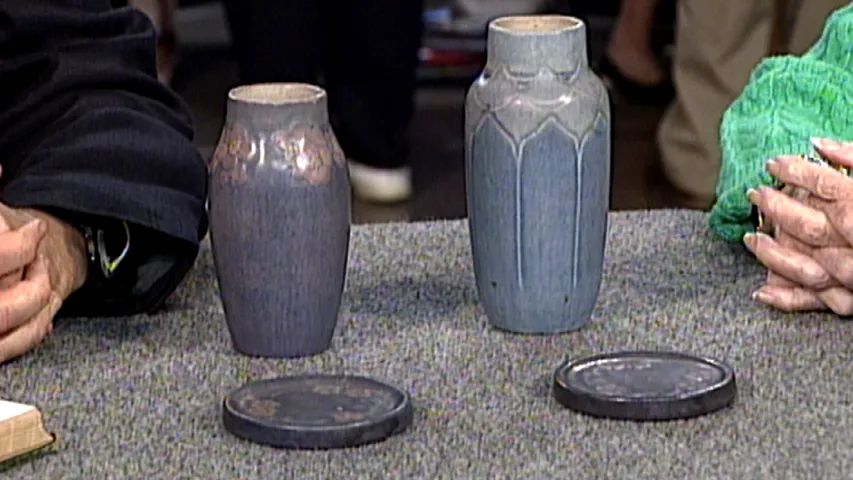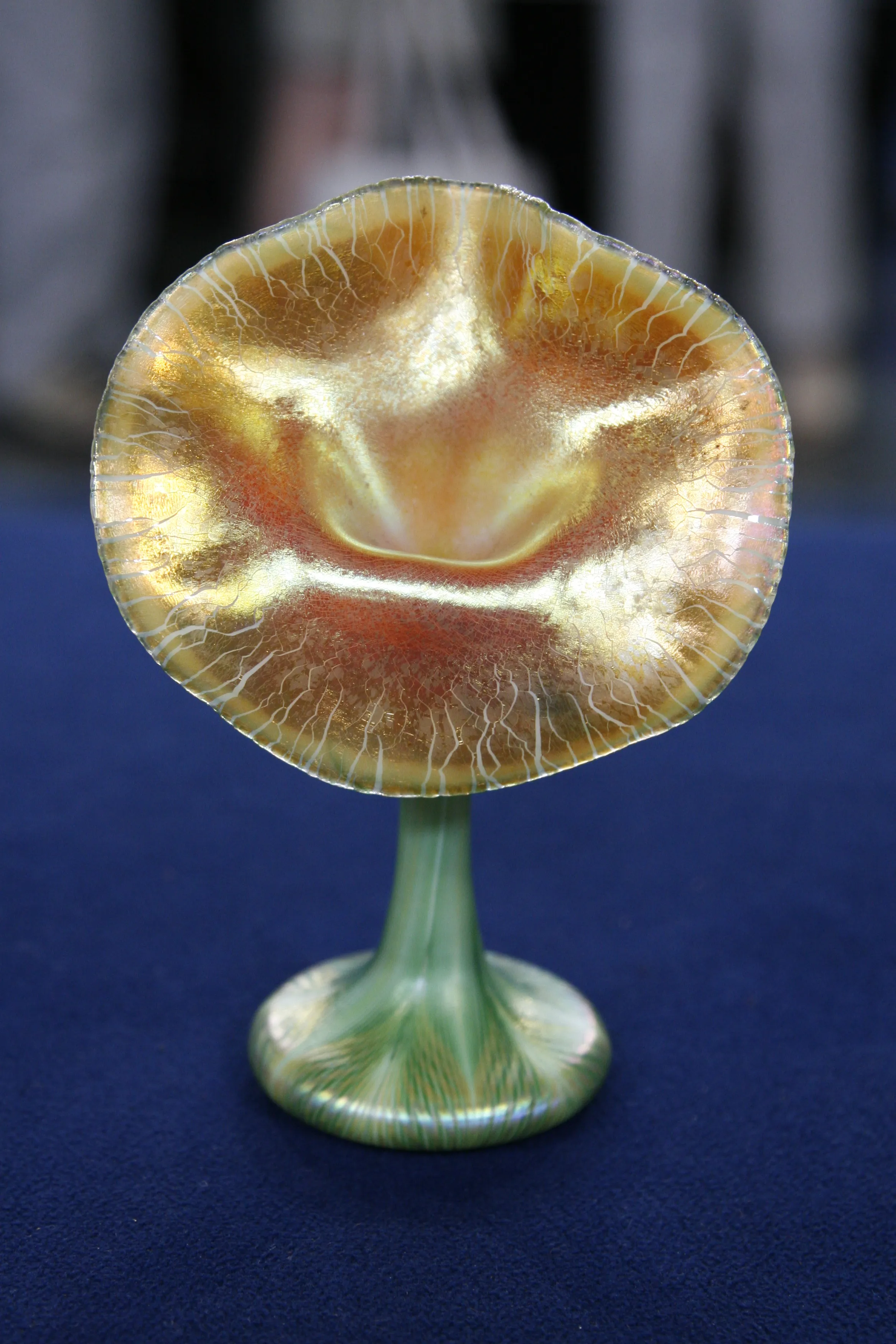GUEST: My grandfather worked for Tiffany's in Corona. These pieces were seconds and would not be sold. And he would bring them home to my grandmother, who really did not like them at all. And these were the ones that she had kept. And the other ones she had buried in the backyard.
APPRAISER: Did your grandfather ever talk about what it was like to work there?
GUEST: He said that it was very, very hard, the hours were very long, and that it was very tedious.
APPRAISER: Oftentimes I have seen pieces that have come into families through someone who had actually worked at Tiffany Studios.
GUEST: Yes.
APPRAISER: At the glassworks in Corona, Queens.
GUEST: Yes.
APPRAISER: And what's interesting about your story, when you say that they're seconds, four out of the five pieces are unsigned. And it was not uncommon for the unsigned pieces to go home with the people who worked at Tiffany studios. So that further corroborates the story. Now, what's interesting is the one piece that is signed, which is this piece... and this is a very, very early piece. And this is signed. It bears a registration number with a prefix letter C, which indicates that this was made between 1895 and 1896.
GUEST: Oh, wow.
APPRAISER: Do you know exactly the years that your grandfather worked there?
GUEST: It would be in the late teens, 1919, maybe.
APPRAISER: Right.
GUEST: Around in there.
APPRAISER: Okay, well, so this probably sat around at Tiffany Studios for a long time before it went home with someone.
GUEST: Isn't that something?
APPRAISER: But let me show you. It's very corroded on the inside.
GUEST: Yes.
APPRAISER: And that's probably why it was considered a second. It's strange that they did bother to sign it. So that's kind of a little mystery for me. But I've seen this on a lot of the very early pieces. But this is so unusual, because three of these are gold iridescent pieces, whereas this is almost like a paperweight that actually is faceted like honeycombs.
GUEST: Yes.
APPRAISER: And then there's a wonderful variation in the glass. It's sort of a root beer color, and then it progresses to more of a golden color. The four other pieces, with the exception of the signed piece, those are later pieces. And those could have been made anywhere from 1900, as late as 1925, or even 1930. In terms of value, this one, in a retail venue, would sell for about $500. This one in a retail venue would sell for about $250. This is kind of a funny little piece.
GUEST: That was always my favorite. And he has said that it was made for a woman to put her lipstick in.
APPRAISER: Well, it is possible, but I also think it might be a little shot glass, believe it or not.
GUEST: Oh, that would work, okay.
APPRAISER: And it's a little more unusual also, because it's transparent instead of gold iridescent.
GUEST: Okay.
APPRAISER: This one probably would be worth in the neighborhood of about $75 to $100. This piece here would be about $500 or $600 in a retail venue.
GUEST: Oh, my.
APPRAISER: And this piece, even though it's the most interesting of all, the problem is it has the corrosion. It's interesting, but probably only worth about $300 or $400.
GUEST: Oh, that's fine.
APPRAISER: So if this were in perfect condition, this could have been maybe $1,000 to $1,500.
GUEST: Oh, my, oh, my.


